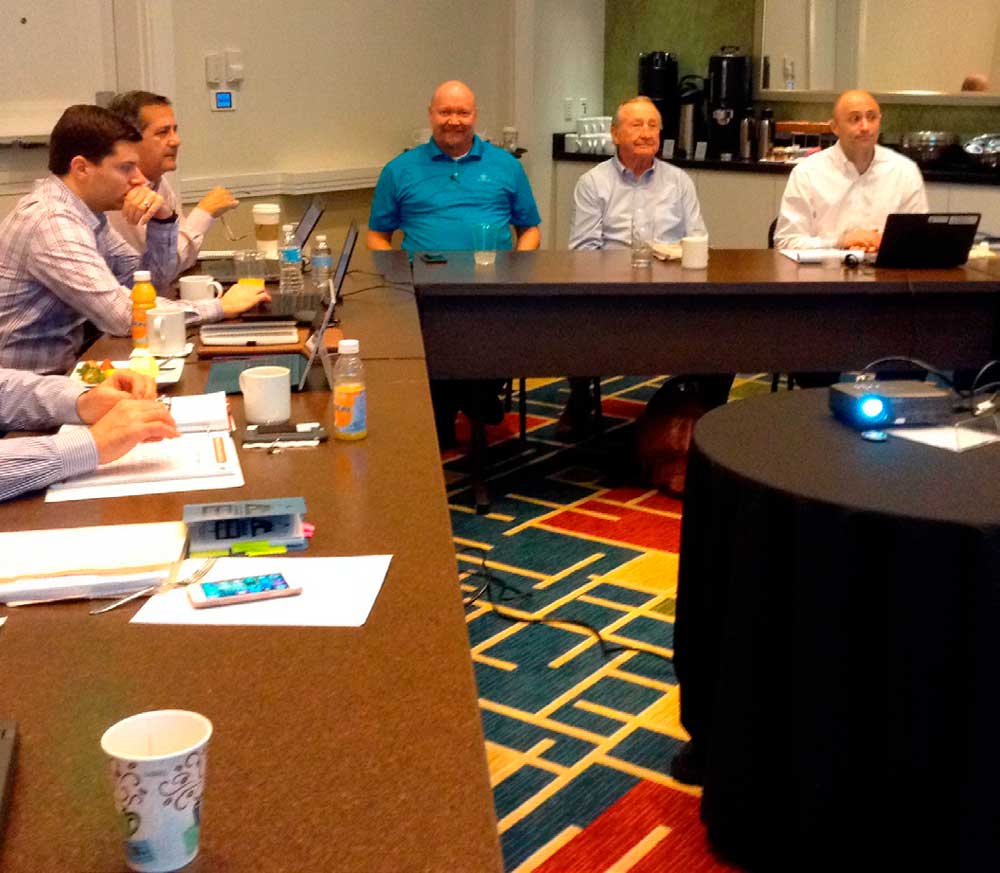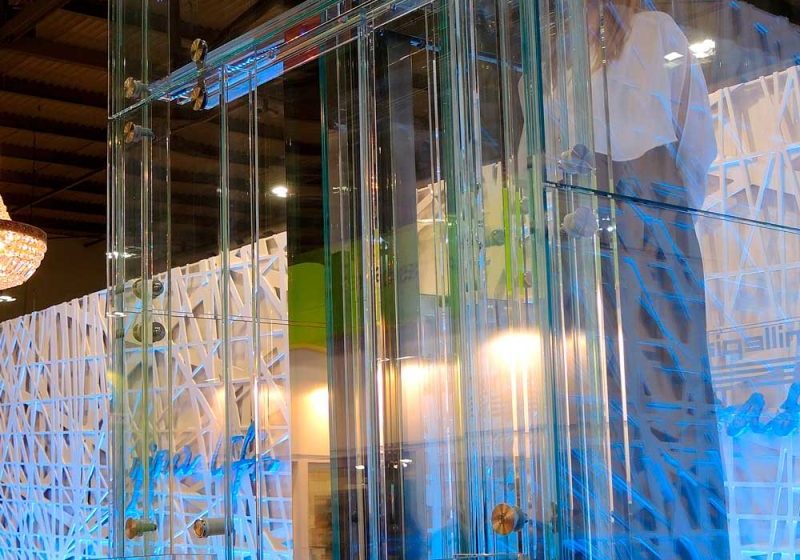NEII Field Safety Committee Meets
May 1, 2017

Atlanta gathering discusses Safety Summit and drafts Safety Absolutes.
The National Elevator Industry, Inc. (NEII®) Field Safety Committee met in Atlanta in late February. Hosted by Schindler, the two-day meeting had its first half devoted to discussions with NAESA International Executive Director Bob Shepherd and Education Director Jack Day on the upcoming Elevator Industry Safety Summit in Phoenix (May 21-23). Much of the meeting involved augmenting the summit agenda with experts from the committee or speakers they recommended. Attendance at the second day was heavy, with more representatives than normal.
The meeting concluded with drawing up the draft of a list of “Safety Absolutes”: nine functions that, when not performed properly, can result in injury or death (see sidebar). They are well known throughout the industry, as all OEMs have a list of nine to 12 safety items their safety directors think are most important. Many are on pocket reminder cards handed out with an employee’s initial copy of the company safety handbook or at an orientation safety meeting. The NEII Field Safety Committee reserves the right to review and revise these agreed-upon absolutes frequently, just as it revises the Elevator Industry Field Employees’ Safety Handbook on a regular basis.
This committee has been in existence since the early 1970s and meets at least three times a year. In addition to NEII members, there are liaison members from the National Association of Elevator Contractors (NAEC); the National Elevator Industry Educational Program (NEIEP); and Elevator World, Inc. Present at the meeting were: Stephen Berney, Prysmian Group; Kevin Brinkman, NEII codes and safety director; Tim Daly, NEIEP; Kevin Dix, Otis; Ray Downs, TEI Group (NAEC representative); Travis Groh, MEI – Total Elevator Solutions; Ricia Hendrick, Elevator World; Scott Johnson, Schindler; Larry Leadingham, thyssenkrupp Elevator; Kent Lloyd, Abell Elevator International, Inc.; Robert Merlo, GS Elevator Industries Inc. (NAEC representative); Bob Rodriguez, Otis; Corey Ward, KONE (committee chairman); Fred Wilt, Schindler; and Karen Penafiel, NEII executive director.
Safety Absolutes
Car Top Access
- Maintain control of the car at all times.
- Send the car down, open the door (door-lock), verify car is present and install the door stopper.
- Verify door safety, stop switches and inspection switch independently.
- Ensure stop switches are activated when exiting car top.
- Secure working area.
Pit Access
- Maintain control of the car at all times.
- Send the car up, open the door (door-lock) and install door stopper.
- Activate and verify pit stop switch and use ladder safely. Turn on pit light.
- Deactivate stop switch after exiting.
- Secure working area.
Mechanical Stored Energy
- Bring equipment to a zero-energy state (i.e., hydraulic, gravitational, pneumatic, etc.).
- Avoid pinch points of materials and tools.
- Avoid loose clothing, and be careful when wearing gloves near moving machinery.
- Ensure all loads are stable and secure.
- Do not put yourself in the line of fire (leaning over to adjacent shaft, etc.)
Fall Protection
- Always wear proper fall protection personal protective equipment (PPE)
- Always tie off when a fall hazard exists.
- Inspect your fall protection system before each use.
- Always be aware of your surroundings (potential fall hazards).
- Ensure proper guardrails are used.
False Cars and Running Platforms
- Perform daily inspection of equipment prior to use.
- Operate with a minimum two means of safety.
- Always assemble/disassemble false cars/running platforms at the lowest landing.
- Do not overload false cars or running platforms.
- Install a protective barrier between cars if performing work while a car is operating at contract speed in an adjacent hoistway.
Hoisting and Rigging
- Ensure a hoisting and rigging plan is in place.
- Know the weight of the load and ensure equipment is rated for the load.
- Do not stand or walk under load being hoisted.
- Use certified equipment and inspect before
- each use.
- Ensure load will clear all obstructions.
Jumpers
- Jumpers may not be installed on the safety circuit when the elevator is on automatic operation.
- Only use company-approved jumpers and inspect jumpers for damage prior to use.
- Make sure all jumpers are accounted for at all times.
- Always notify coworkers when jumpers are being used; use a jumper tag to identify.
- Understand what effect using or removing a jumper will have on the entire system.
Electrical Safe Work Practices
- Lock out and tag out (LOTO) if power is not required (never open mainline disconnect).
- Test meter on known source before use.
- Probe with one hand to verify circuits.
- Use certified tools, inspect before each use, and prevent incidental contact with live electrical circuits.
- Always protect high-voltage exposed live circuits.
LOTO
- Ensure there are no passengers in the cab and all doors are closed and secured.
- LOTO if power is not required (never open mainline disconnect).
- Follow company LOTO procedures.
- Verify that the correct system has been deenergized.
- Follow “Electrical Safe Work Practices” (see above).
Get more of Elevator World. Sign up for our free e-newsletter.









